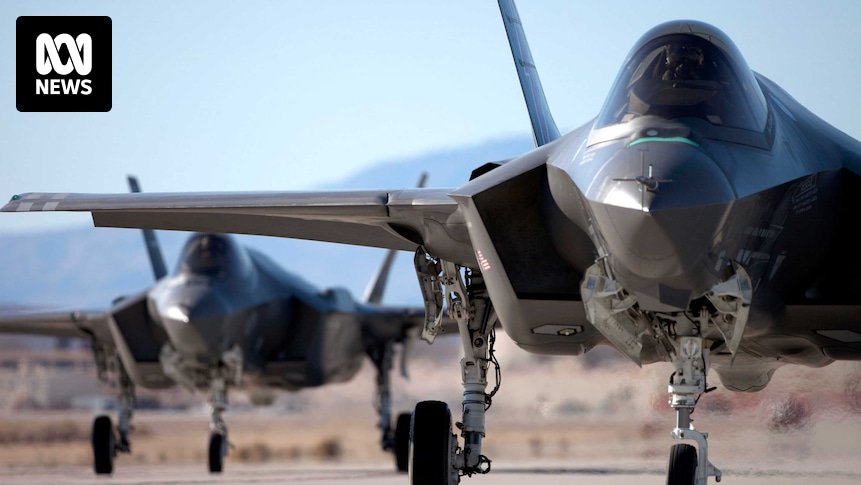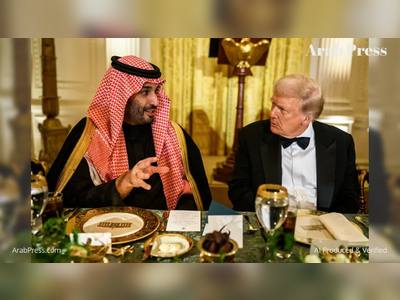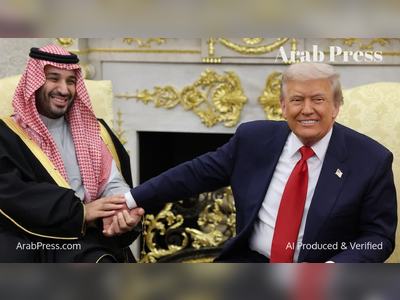
Australia’s F-35 Supply Face Fresh Scrutiny Following US Approval of Jets for Saudi Arabia
Australia’s contribution to the global F-35 chain raises export control and human-rights questions amid US-Saudi defence deal
Australia is under renewed scrutiny over its participation in the global supply chain for the F‑35 stealth fighter following the Donald Trump administration’s approval of a forthcoming sale of the jets to Saudi Arabia.
The United States announced the deal on the eve of the Saudi Crown Prince’s Washington visit, signalling a major shift in regional defence ties.
The deal marks the first time Saudi Arabia has been approved for F-35 acquisitions.
US officials say the Saudi jets will be less capable than those currently operated by Israel, maintaining Israel’s qualitative military edge in the region.
The sale still requires formal congressional approval and export licensing procedures.
Australia is deeply embedded in the F-35 programme, with more than seventy Australian firms supplying parts and components—over seven hundred in the state of Victoria alone.
Under Australia’s export control obligations, the Arms Trade Treaty governs not only complete weapon systems but also their constituent parts.
Monday’s announcement raises concern among human-rights groups and security analysts that Australian-made components may find their way into Saudi-operated combat aircraft used in regional conflicts.
Defence-industry specialist Michael Shoebridge highlighted that while Australia issues the original export permits for domestically manufactured components, it cannot determine the end-user of the globally managed supply chain, which is led by Lockheed Martin and overseen by the US government.
This arrangement, he warns, creates a legal and reputational risk for Australia should the jets be used in operations raising questions of international humanitarian law.
Australia’s government has maintained that its role is limited to non-lethal parts and that the US retains export control and end-use oversight.
Nevertheless, legal commentary suggests that Australia arguably retains responsibility under international treaty obligations when its components become integral to a combat aircraft operated by an ally.
The human-rights advocacy organisation Amnesty International Australia described the decision as “problematic,” pointing to Saudi Arabia’s longstanding involvement in the war in Yemen and the 2018 killing of journalist Jamal Khashoggi.
As aircraft deliveries approach, Australian companies and government agencies will need to clarify the mechanisms of monitoring and end-use assurance—especially given Australia’s legal and ethical commitment to arms-export standards.
The deal is also a test for the US-led coalition of F-35 partner nations and for Australia’s posture in global defence supply chains.
With US intelligence warning that Saudi Arabia’s close ties to China could pose technology-leak risks, the issue touches on broader Indo-Pacific strategic concerns in which Australia has a vested interest.
As the contract moves toward congressional review and final US executive approval, Australia faces mounting pressure to either seek tighter export controls or to clarify its role and liabilities in the chain.
The coming weeks will test both Australia’s defence-industry governance and its position in the global F-35 ecosystem.
The United States announced the deal on the eve of the Saudi Crown Prince’s Washington visit, signalling a major shift in regional defence ties.
The deal marks the first time Saudi Arabia has been approved for F-35 acquisitions.
US officials say the Saudi jets will be less capable than those currently operated by Israel, maintaining Israel’s qualitative military edge in the region.
The sale still requires formal congressional approval and export licensing procedures.
Australia is deeply embedded in the F-35 programme, with more than seventy Australian firms supplying parts and components—over seven hundred in the state of Victoria alone.
Under Australia’s export control obligations, the Arms Trade Treaty governs not only complete weapon systems but also their constituent parts.
Monday’s announcement raises concern among human-rights groups and security analysts that Australian-made components may find their way into Saudi-operated combat aircraft used in regional conflicts.
Defence-industry specialist Michael Shoebridge highlighted that while Australia issues the original export permits for domestically manufactured components, it cannot determine the end-user of the globally managed supply chain, which is led by Lockheed Martin and overseen by the US government.
This arrangement, he warns, creates a legal and reputational risk for Australia should the jets be used in operations raising questions of international humanitarian law.
Australia’s government has maintained that its role is limited to non-lethal parts and that the US retains export control and end-use oversight.
Nevertheless, legal commentary suggests that Australia arguably retains responsibility under international treaty obligations when its components become integral to a combat aircraft operated by an ally.
The human-rights advocacy organisation Amnesty International Australia described the decision as “problematic,” pointing to Saudi Arabia’s longstanding involvement in the war in Yemen and the 2018 killing of journalist Jamal Khashoggi.
As aircraft deliveries approach, Australian companies and government agencies will need to clarify the mechanisms of monitoring and end-use assurance—especially given Australia’s legal and ethical commitment to arms-export standards.
The deal is also a test for the US-led coalition of F-35 partner nations and for Australia’s posture in global defence supply chains.
With US intelligence warning that Saudi Arabia’s close ties to China could pose technology-leak risks, the issue touches on broader Indo-Pacific strategic concerns in which Australia has a vested interest.
As the contract moves toward congressional review and final US executive approval, Australia faces mounting pressure to either seek tighter export controls or to clarify its role and liabilities in the chain.
The coming weeks will test both Australia’s defence-industry governance and its position in the global F-35 ecosystem.





